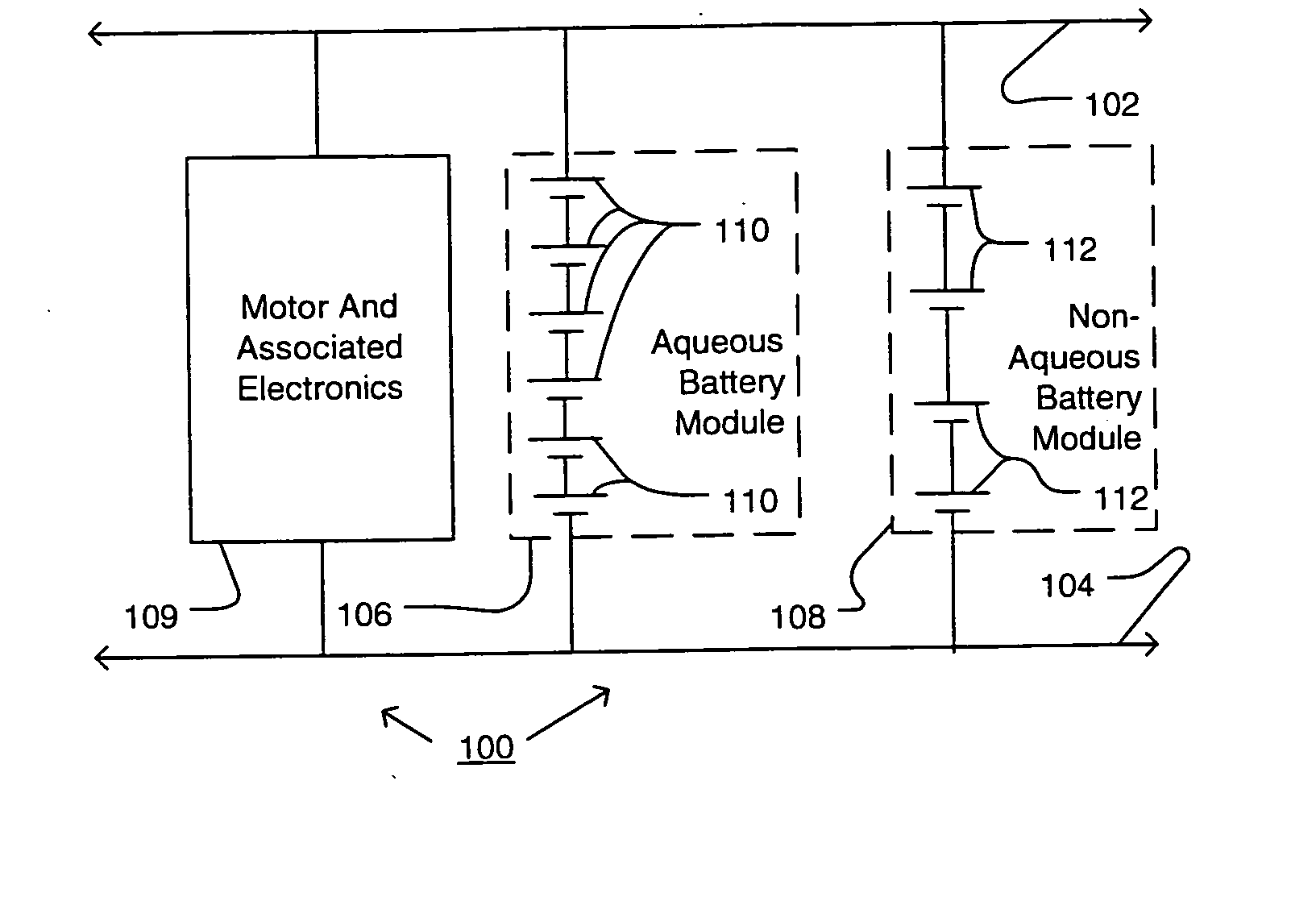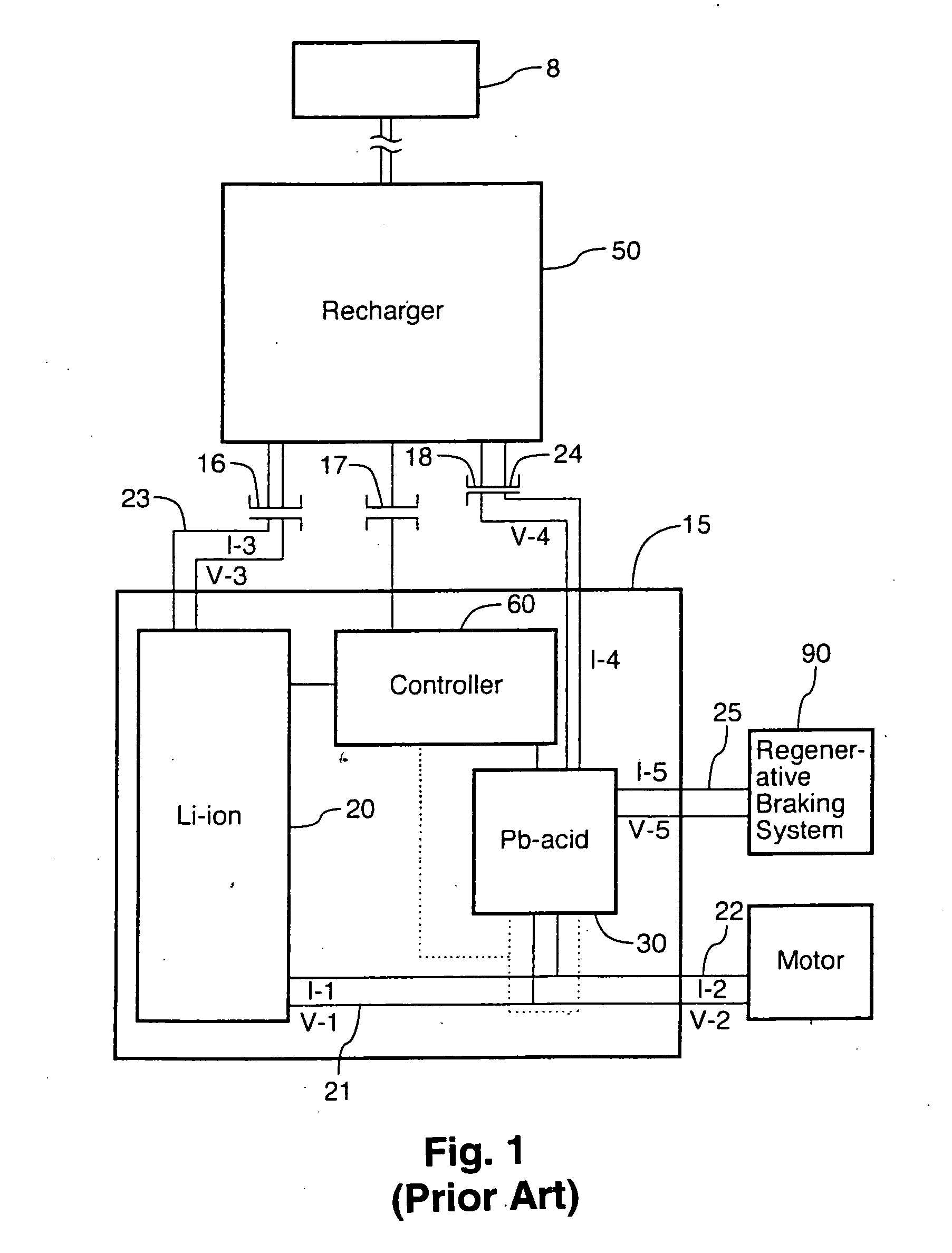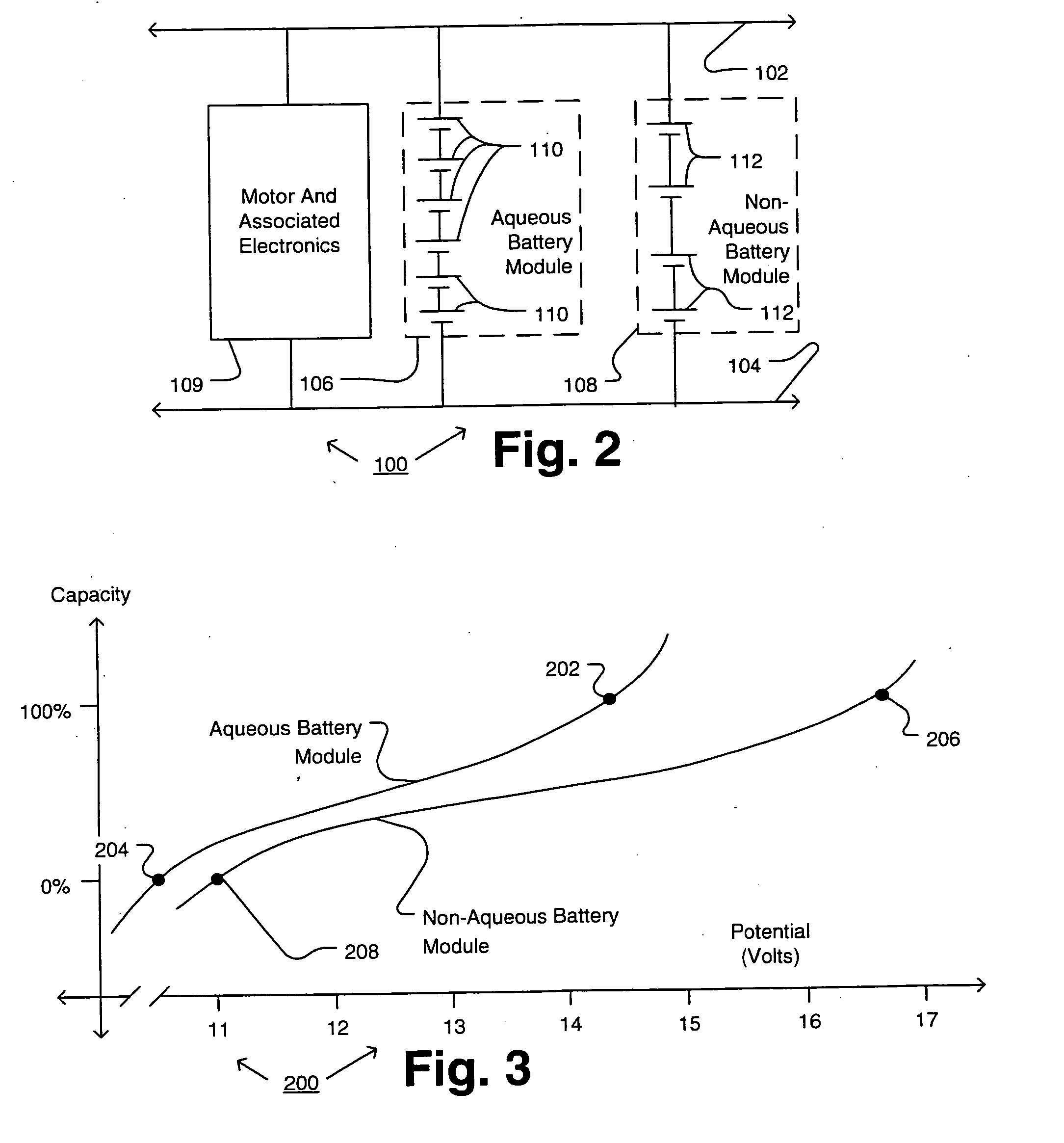Battery powered vehicle overvoltage protection circuitry
- Summary
- Abstract
- Description
- Claims
- Application Information
AI Technical Summary
Benefits of technology
Problems solved by technology
Method used
Image
Examples
Example
[0029]FIG. 2 is a first embodiment of power storage circuitry 100 for storing electrical power used to drive an electric driving motor of a battery powered vehicle (“BPV”). Preferably, the BPV has no need for an internal combustion engine or fuel cell or other on-vehicle energy source because it can store sufficient electrical energy in its battery modules. However, the present invention has broader application to internal combustion-battery hybrid vehicles, fuel cell-battery hybrid vehicles and the like. Preferably, the BPV is an LSBPV. That is because: (1) LSBPVs are increasingly popular; (2) LSBPVs are energy efficient, yet convenient for the user, relative to other transport solutions; (3) LSBPVs can be cheaper to make and / or maintain than larger battery powered vehicles; and (4) the electronics included in many conventional LSBPV designs (specifically, the power rails and associated electronics discussed below) are especially compatible with the present invention. However, the ...
PUM
 Login to View More
Login to View More Abstract
Description
Claims
Application Information
 Login to View More
Login to View More - R&D
- Intellectual Property
- Life Sciences
- Materials
- Tech Scout
- Unparalleled Data Quality
- Higher Quality Content
- 60% Fewer Hallucinations
Browse by: Latest US Patents, China's latest patents, Technical Efficacy Thesaurus, Application Domain, Technology Topic, Popular Technical Reports.
© 2025 PatSnap. All rights reserved.Legal|Privacy policy|Modern Slavery Act Transparency Statement|Sitemap|About US| Contact US: help@patsnap.com



